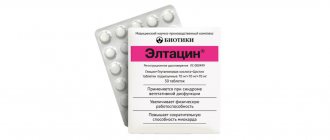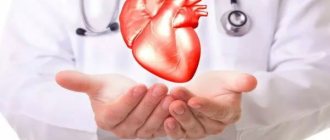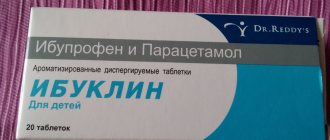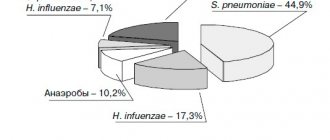The name of the drug Spazgan speaks for itself. Its action is aimed at relieving pain that occurs due to spasm. The drug has a pronounced effect, so Spazgan is classified as a potent drug. Take it with caution, as directed and under the supervision of the attending physician, since the drug can cause side effects. Spazgan has a number of contraindications, and an overdose is dangerous, since the components included in the composition have a certain toxicity threshold. There is no antidote. Read more about the indications for use of the drug Spazgan below.
Pharmacodynamics and pharmacokinetics
Many people use a combined analgesic and antispasmodic drug - Spazgan, what helps and what the mechanism of action is has been thoroughly studied. It has been established that the active components provide analgesic, antipyretic and mild anti-inflammatory effects.
Thus, metamizole sodium is a non-narcotic analgesic , pitofenone hydrochloride is a myotropic antispasmodic that has a direct effect on the smooth muscles of internal organs, and fenpiverinium bromide is an anticholinergic blocker that complements the relaxing effect. It is in this combination that the pharmacological effects mutually enhance, which reduce elevated body temperature and relieve pain by relaxing smooth muscles.
Pharmacokinetics of metamizole
Resorption is rapid and complete; after 30 minutes, an amount of 5% of the maximum serum concentration is in the bloodstream. Partial binding to plasma proteins occurs in the bloodstream. In general, the substance in the human body is subject to intense biotransformation, resulting in the formation of active metabolites. Only 3% that is excreted is unchanged metamizole . It has been established that individual components can be excreted in breast milk.
Features of the composition and action of Spazgan
The medicine is prepared in tablets and solution for injection. The instructions note that the tablet form of the medication contains:
- sodium metamizole;
- pitofenone hydrochloride;
- fenpiverinium bromide.
Spazgan has a slight anti-inflammatory effect; the drug is aimed at relieving pain and reducing fever. The product contains a non-narcotic analgesic, a myotropic antispasmodic and an anticholinergic blocker. The interaction of three active components relaxes smooth muscles, providing the expected effect.
Indications for use of Spazgan
- reduction of pain after surgical or diagnostic interventions;
- reduction of increased body temperature in patients with colds or infectious and inflammatory diseases .
Indications for the use of Spazgan for mild or moderate pain syndrome are:
- intestinal spasms;
- spastic state of internal organs;
- biliary or renal colic;
- dysmenorrhea;
- joint pain;
- symptomatic treatment for neuralgia , myalgia , sciatica .
Attention!
Do not use the drug to relieve abdominal pain until the cause of its occurrence is determined.
Adverse reactions
During therapeutic procedures, Spazgan can cause non-standard responses of the body. Side effects appear:
- allergies - with dermatological rash, redness of the skin, obsessive itching, and occasionally anaphylaxis may develop;
- accelerated heart contractions, drop in blood pressure;
- cyanosis, dizziness;
- increased dryness of the mucous membranes in the oral cavity;
- cephalgia, discomfort in the epigastric region;
- short-term loss of consciousness, disturbances of accommodation;
- a decrease in the number of platelets, leukocytes, etc. in the blood;
- attacks of bronchospasm – in patients with previously registered manifestations of pathology.
The appearance of non-standard symptoms requires consultation with the attending physician and a review of the prescribed therapeutic regimen.
Contraindications
Metamizole sodium , pitofenone hydrochloride , fenpiverinium bromide are included in Spazgan tablets. What are they contraindicated for:
- with hypersensitivity to pyrazolone (including Butadione , Tribuzon ) and other components of the drug;
- with severe functional disorders of the kidneys or liver;
- with tachyarrhythmia ;
- in the absence of glucose-6-phosphate dehydrogenase ;
- with angle-closure glaucoma ;
- with prostatic hypertrophy leading to urinary retention ;
- for gastrointestinal obstruction ;
- with megacolon ;
- in the presence of various diseases of the blood system;
- patients in a collaptoid state ;
- pregnant women in the first trimester and the last 6 weeks;
- nursing mothers;
- children under 5 years old.
Side effects
- allergic reactions , manifested in the form of skin rash , itching anaphylactic shock develops ;
- tachycardia , dizziness , decreased blood pressure , cyanosis ;
- Isolated cases of epigastric burning, dry mouth and headache have been reported;
- with prolonged use, the anticholinergic effect can lead to fainting and impaired accommodation ;
- long-term therapy can lead to disorders of the blood system, for example, thrombocytopenia , leukopenia , agranulocytosis ;
- Patients prone to bronchospasm must beware of the risk of provoking an attack.
Instructions for use of Spazgan (Method and dosage)
It is recommended to take the tablets after meals, orally. Dosage regimen: 1-2 tablets up to 3 times a day.
The maximum daily dose is 6 tablets.
Duration of therapy is up to 5 days, otherwise monitoring of peripheral blood parameters and assessment of the functional state of the liver is required.
Spazgan tablets, instructions for use in children
Use is possible only as prescribed by a doctor. The dosage differs depending on the age of the child:
- from 6 to 8 years - no more than 0.5 tablets;
- 9–12 - you can give 3/4 tablets;
- adolescents 13–15 years old are prescribed 1 tablet. up to 3 times during the day.
With intravenous or intramuscular administration of Spazgan solution
- patients with acute severe colic: 5 ml is administered slowly intravenously over 5-8 minutes, if necessary, repeated administration is allowed after 6-8 hours;
- standard single dose – no more than 2 ml;
- the maximum permissible daily dose is no more than 10 ml.
Nosological classification (ICD-10)
- K59.8.1* Intestinal dyskinesia
- K82.8.0* Dyskinesia of the gallbladder and biliary tract
- M25.5 Joint pain
- M54.3 Sciatica
- M79.1 Myalgia
- M79.2 Neuralgia and neuritis, unspecified
- N23 Renal colic, unspecified
- N94.6 Dysmenorrhea, unspecified
- R10.4 Other and unspecified abdominal pain
- R25.2 Cramp and spasm
- R50.0 Fever with chills
- R52.9 Pain, unspecified
- T88.9 Complication of surgical and therapeutic intervention, unspecified
Interaction
- combination with other non-narcotic analgesics causes mutual enhancement of toxic effects;
- with tricyclic antidepressants , oral contraceptives , Allopurinol metabolism in the liver is disrupted and the toxicity of metamizole ;
- with barbiturates , phenylbutazone and other inducers of hepatic microsomal enzymes, metamizole is weakened ;
- with Cyclosporine - the level of the latter in the bloodstream decreases;
- with sedatives and tranquilizers, the analgesic effect of Spazgan is potentiated.
Overdose and interaction with other drugs
The instructions recommend taking Spazgan only as prescribed by your doctor. If the dosage is accidentally exaggerated, patients may experience:
- vomiting, convulsive syndrome;
- increased dryness of the mucous membranes of the oral cavity;
- active sweating, accommodation disturbances;
- low blood pressure, drowsiness;
- confusion, renal or hepatic dysfunction.
To reduce intoxication, the patient needs to rinse the stomach, give activated charcoal and undergo symptomatic therapy.
The combination of Spazgan with other drugs can provoke:
- severe toxic reactions - together with non-narcotic analgesics;
- changes in metabolism and increased toxicity - with oral contraceptives and tricyclic antidepressants;
- reducing the effect of metamizole - when using barbiturates, Phenylbutazone;
- a drop in Cyclosporine levels in the systemic circulation;
- enhanced analgesic effect - in combination with tranquilizers, sedatives.
If the patient is taking third-party medications, he must notify the attending physician about this in advance, before the final calculation of the therapeutic regimen. It is prohibited to take the medication together with alcoholic beverages. Violation of the rules can provoke depression of the central nervous system and affect the psychophysical state of the patient.
Changing the color of urine to red during therapy does not matter - the problem is associated with arbitrary coloring of the liquid by the active components of the drug.
Analogs
Level 4 ATC code matches:
Analdim
Reopirin
Tempalgin
Benalgin
Pentalgin ICN
Pentalgin N
Pentalgin
Analgin
Renalgan
Tetralgin
Spasmalin
Maxigan
Sedal-M
Piralgin
Baralgin M
Sedalgin Plus
Baralgetas
Revalgin
Andipal
Spazgan substitutes that match all 3 active ingredients:
- Baralgetas solution and tablets ;
- Realgin solution and tablets ;
- Maxigan tablets ;
- Renalgan and Realgan , Reonalgan ;
- Spazmadol , Spazmalgon , Spasmoblock , Spazmil .
Differences between Spazgan and Spazmalgon
Most often, patients using modern antispasmodics ask the question: which is better Spazgan or Spazmalgon ?
Spazmalgon is a structural analogue of Spazgan, produced in Bulgaria, which is slightly cheaper in price. Due to the same active ingredients and their quantity in 1 tablet, the instructions for use, indications, and contraindications for these drugs are the same. However, on the forums you can find different comments in favor of one or another analogue. But this is more of a personal individual reaction of the body rather than a pattern.
The main difference between Spazgan and Spazmalgon is the price and manufacturer.
Spazgan price, where to buy
The average cost of Spazgan solution (5 ampoules of 5 ml) is 140-150 rubles, while the price of Spazgan tablets differs depending on the number of tablets in the package:
- a package of tablets No. 20 costs approximately 130 rubles;
- pack of tablets No. 100 - approximately 410 rubles.
- Online pharmacies in RussiaRussia
ZdravCity
- Spazgan tablets 20 pcs. Wockhardt
135 rub. order - Spazgan tablets 100 pcs. Wockhardt
RUB 413 order
- Spazgan NEO tablets p.p.o. 400mg+5mg+0.1mg 20 pcs. Wockhard Limited
182 RUR order
- Spazgan solution for IV and IM injection 500mg/ml+20mg/ml+0.02mg/mlWockhard Limited/Zen Pharma P LTD
RUB 139 order
Release form
Spazgan is produced in two modifications. In tablets packed in a blister in an amount of 10 pcs. A standard cardboard package contains 2 blisters. Composition of one Spazgan tablet:
- metamizole sodium - 500 mg
- pitofenone hydrochloride – 5 mg
- fenpiverinium bromide - 100 mcg.
Injection solution for intravenous administration. Ampoule volume 5 ml. Cellular packaging contains 5 ampoules. Five packages are enclosed in a cardboard box. Composition of one ampoule of solution for injection:
- metamizole sodium – 1 g
- pitofenone hydrochloride – 400 mcg
- fenpiverinium bromide – 4 mcg.
Analogs produced in other countries:
- Baralgin
- Took
- Spasmablock
- Revalgin
- Plenalgin
- Spasmalgon
- Maxigan
- Baralgetas.





